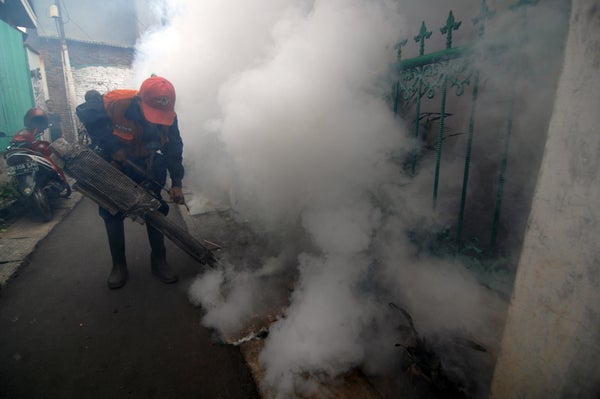Tracking of the Zika virus indicates that 279 pregnant women across the United States and its territories now have it, according to new official figures. Most of these women are still pregnant and are being monitored to see if their fetuses develop abnormalities including microcephaly.
The new numbers, published Friday in a report from the U.S. Centers for Disease Control and Prevention, underscore the challenge of preventing Zika from spreading to pregnant women and their fetuses. The official count includes cases up to May 12 and will be updated every Thursday at noon. The women in all of these cases had tested positive for the virus or responded to antibody testing—indicating they were likely positive—but not all the women had symptoms or pregnancy complications.
Before Friday’s announcement, the number of pregnant women who tested positive for Zika but did not have any of its symptoms was not publicly reported. Instead, only the number of pregnant women with lab evidence of the virus—and symptoms or complications—was publicly tracked. So far there have been “less than a dozen” adverse outcomes such as birth defects or miscarriages among these 279 women, but tracking is ongoing, says Margaret Honein, chief of CDC’s birth defects branch. Exactly how often birth defects occur among pregnant women with Zika remains unknown.
On supporting science journalism
If you're enjoying this article, consider supporting our award-winning journalism by subscribing. By purchasing a subscription you are helping to ensure the future of impactful stories about the discoveries and ideas shaping our world today.
The CDC’s change in tracking and publishing numbers was prompted by evidence that asymptomatic women have given birth to children with abnormalities, Honein says. “We have been monitoring women with both symptomatic and asymptomatic Zika since February,” when the U.S. tracking began, she adds. “The change is that we are now publicly reporting the number to give a more transparent picture of all the monitoring that we are doing.”
Zika is being locally transmitted by mosquito bites in some U.S. territories, where a total of 122 women are known to have contracted the virus. The 157 pregnant women in the continental U.S. are believed to have contracted it during travels outside of the country or from sexual contact with an infected partner who had traveled. So far there has been no confirmed case from a local mosquito bite in the continental U.S. But the mosquitoes biologically capable of transmitting the disease are found in about two-thirds of country, and public health authorities expect that there will be small clusters of Zika caused by those bugs.
Because of the threat to pregnant women, CDC also announced Friday that it has launched two new Zika-related pregnancy tracking systems—one for the U.S. and most of its territories and one specific to Puerto Rico—to officially record the broader population of Zika-infected pregnant with laboratory evidence of the virus, regardless of their symptoms. CDC is not yet sharing any specific patient details about individual cases, or whether the women contracted the virus sexually or during travel.
